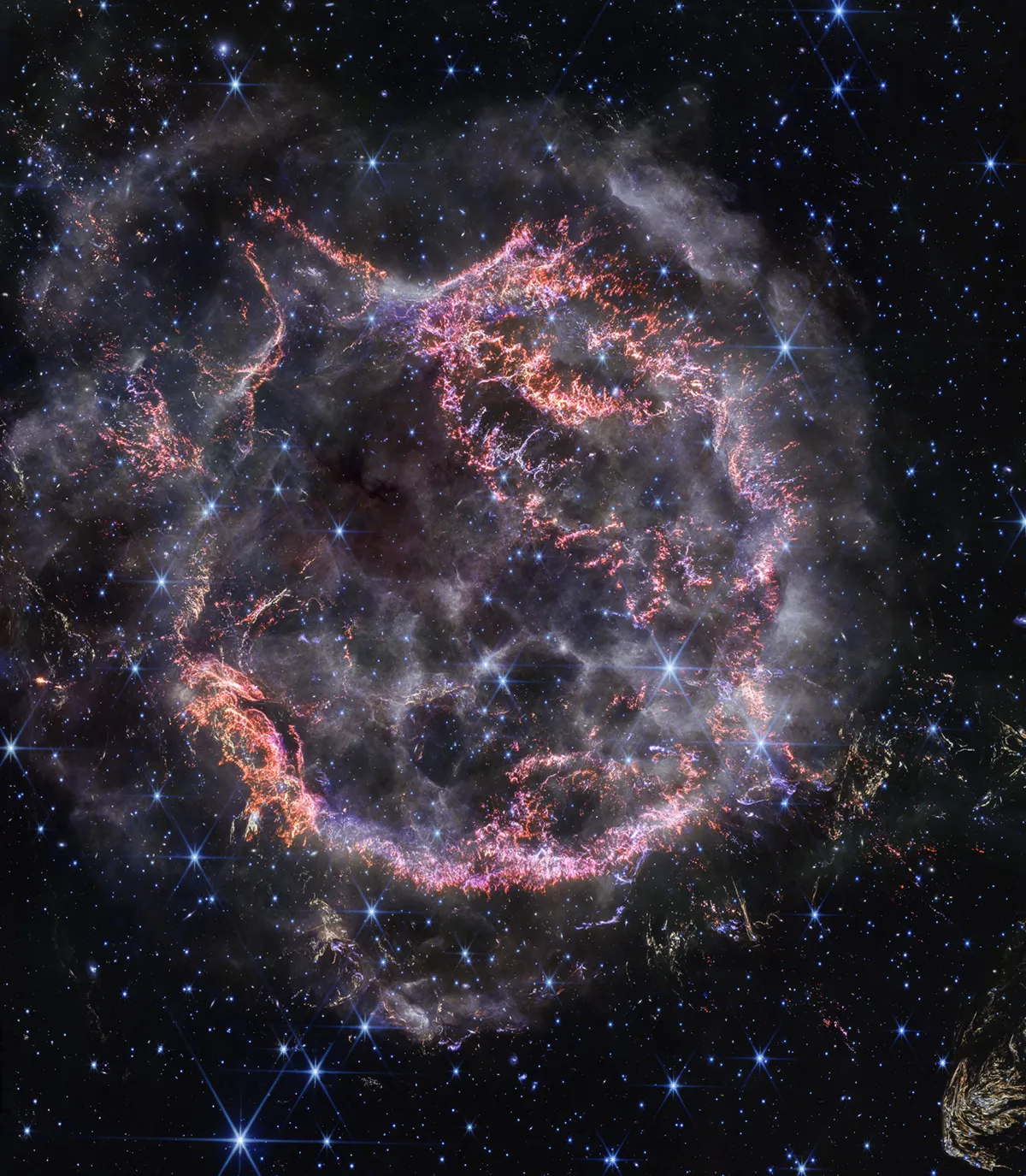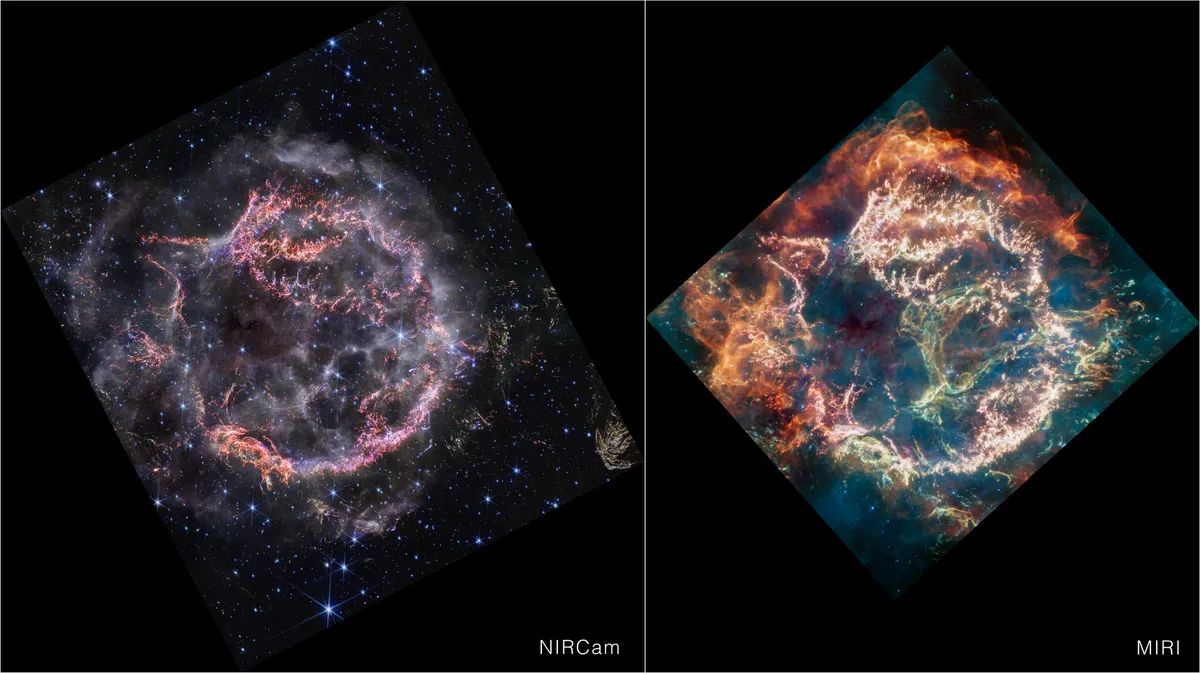The James Webb Space Telescope has captured an image showing the remnants of an exploded star, revealing tangled knots of cosmic gas and dust within.
The new Webb image was captured with its NIRCam (Near-Infrared Camera) instrument and shows Cassiopeia A (Cas A), an object known as a supernova remnant.
Supernovae occur when large stars reach the end of their lives and undergo a stellar explosion.
The remains of these violent events can be seen long after, and are known as supernova remnants.
See the latest James Webb Space Telescope images

Cassiopeia A is one of the most famous supernova remnants and has been studied by the Hubble Space Telescope, Spitzer Space Telescope and Chandra X-ray Observatory.
Now, the James Webb Space Telescope has taken its turn to study Cassiopeia A.
Webb's Cassiopeia A in infrared
The Webb Telescope observes the cosmos in infrared, meaning it can see details that would otherwise be invisible to the human eye.
Infrared is able to peer through dense cosmic dust and get to the heart of the targets that Webb studies.
This Webb NIRCam image of Cassiopeia A shows clumps of bright orange and pink that are the inner shell of the supernova remnant.

Webb is able to detect knots of gas, sulphur, oxygen argon and neon within Cassiopeia A.
The structure contains cosmic dust, which has the potential to coalesce under gravity over time, to grow and grow and eventually form brand new stars.
"With NIRCam’s resolution, we can now see how the dying star absolutely shattered when it exploded, leaving filaments akin to tiny shards of glass behind,” says Danny Milisavljevic of Purdue University, who leads the research team behind this new study.
"It’s really unbelievable after all these years studying Cas A to now resolve those details, which are providing us with transformational insight into how this star exploded."
